
View full lesson: http://ed.ted.com/lessons/3-tips-to-boost-your-confidence-ted-edMade in partnership with the Always #LikeAGirl campaign.When faced with a b...
- Subject:
- Education
- Health Education
- Material Type:
- Other
- Date Added:
- 10/04/2023

View full lesson: http://ed.ted.com/lessons/3-tips-to-boost-your-confidence-ted-edMade in partnership with the Always #LikeAGirl campaign.When faced with a b...
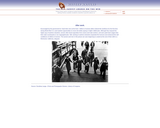
Encouraged by the government to back their men at the front

Isabelle Van Wagenen was born enslaved in New York State and became a well-known abolitionist speaker under the name Sojourner Truth after gaining her freedom in 1827. She moved to New York City where she engaged in evangelical and other reform activities; at various points she also lived in several utopian communities. Truth supported herself by traveling and speaking on abolitionist and women's rights subjects, taking the name Sojourner Truth in 1843. She often faced opposition at her speaking engagements. Truth made this extemporaneous speech in Akron Ohio in 1851 at a women's rights meeting. No direct record of the speech exists, but Frances Gage, a white activist and author who was presiding over the meeting, recalled it over a decade later. While some historians have questioned Gage's accuracy in reconstructing the syntax and even the exact language of Truth's oration, the power and charismatic force of her argument about the equality of women remains evident.
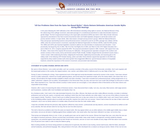
In the years following the 1920 ratification of the 19th Amendment extending voting rights to women, the National Woman's Party, the radical wing of the suffrage movement, advocated passage of a constitutional amendment to make discrimination based on gender illegal. The first Congressional hearing on the equal rights amendment (ERA) was held in 1923. Many female reformers opposed the amendment in fear that it would end protective labor and health legislation designed to aid female workers and poverty-stricken mothers. A major divide, often class-based, emerged among women's groups. While the National Woman's Party and groups representing business and professional women continued to push for an ERA, passage was unlikely until the 1960s, when the revived women's movement, especially the National Organization for Women (NOW), made the ERA priority. The 1960s and 1970s saw important legislation enacted to address sex discrimination in employment and education--most prominently, the Equal Pay Act of 1963, Title VII of the Civil Rights Act of 1964, and Title IX of the 1972 Higher Education Act--and on March 22, 1972, Congress passed the ERA. The proposed amendment expired in 1982, however, with support from only 35 states÷three short of the required 38 necessary for ratification. Strong grassroots opposition emerged in the southern and western sections of the country, led by anti-feminist activist Phyllis Schafly. Schlafly charged that the amendment would create a "unisex society" while weakening the family, maligning the homemaker, legitimizing homosexuality, and exposing girls to the military draft. In the following 1970 Senate hearing, author and editor Gloria Steinem argued that opposition to the ERA was supported by deep-seated societal myths about gender that exaggerated difference, ignored factual evidence of inequitable treatment, denied the importance of the women's movement, and promoted male domination.
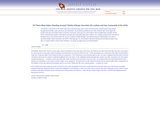
The women's movement of the 1970's sent shock-waves through every corner of American life, transforming the way people thought about families, jobs, and every day interactions. By questioning traditional sex roles, feminism also encouraged the growth of the gay and lesbian rights movement. Previously, many gay men and lesbians had concealed their sexuality, but the 1970's witnessed the growth of assertive and visible gay and lesbian alternative cultures. As a college student at the University of Michigan and a union activist within the city bus company, Shelley Ettinger remembered living and participating in an active, assertive lesbian culture during the mid-1970's. Although gay men and lesbians still faced harassment and discrimination, they were no longer afraid to express their identities or to speak out against bias and discrimination.
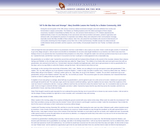
During the second quarter of the 19th century numerous radical movements emerged, and some withdrew from society and formed ideal or utopian communities. The Shakers (or Shaking Quakers) were the oldest and largest of these utopian movements, founded in Great Britain by Mother Ann Lee, who arrived in North America in 1774. Shakers abandoned the traditional family in favor of a new fellowship of men and women who lived as brothers and sisters, worked in agriculture and artisanal crafts, and adopted the practices of cooperation and celibacy. Many were attracted to their communitarian message, especially women like Mary Doolittle of New Lebanon, New York, who joined the local Shakers (the second of what became 19 communities stretching from New England, across New York, to Ohio and Kentucky). Doolittle narrates her initial emotional conflict between family and belief, and the suspicion, even hostility, of local people toward her new "Family," as Shaker units were called.

Wartime production demanded the mobilization of thousands of workers to make steel and rubber, to work in petrochemical industries, and to build ships. As a result, African Americans made striking gains in employment even while also facing continuing discrimination. Black women, for example, got jobs working on the railroads for the first time during the world war. Black women found jobs as laborers, cleaning cars, wiping engines, tending railroad beds. Helen Ross was one of them, working for the Santa Fe Railroad. In an interview with the Women's Service Section of U.S. Railroad Administration, Ross described the advantages of her railroad job. Nevertheless, the same agency later declared such work too heavy for women.

In 1889, Knights of Labor General Investigator Leonora Barry surprised the union by recommending that the Woman's Department, which she headed, be disbanded. "There can be no separation or distinction of wage workers on account of sex," she argued, "and a separate department for the interests of women is a direct contradiction of this." The Knights rejected her recommendations, and Barry continued her organizing work. What finally halted Barry's organizing efforts--and the work of the union's Woman's Department--was her marriage in 1890 to Obadiah Read Lake, a St. Louis Knight and printer. Terrence V. Powderly, the head of the Knights, had not always fully supported Barry's efforts and his readiness to see her marriage as the equivalent of her death (as this letter to a fellow Knight revealed) showed the limitations of the Knights' commitment to women's full participation. Although Barry's labor organizing ended, she remained active in temperance, women's suffrage, and other progressive causes.
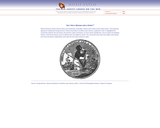
African-American women held as slaves were particularly vulnerable to abuse at the hands of their white owners. This engraving appeared in abolitionist George Bourne's Slavery Illustrated in Its Effects upon Women, published in 1837. It highlighted the connections between the anti-slavery and women's rights movements, as some women abolitionists, such as Sarah and Angelina Grimke, used the anti-slavery cause to address their own plight as women. The connections they drew were highly controversial, and many anti-slavery organizations were split over the issue of women's rights.
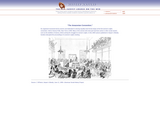
An organized movement led by women and dedicated to winning equality took formal shape at the first women's rights convention, held in Seneca Falls, New York in 1848. Many of the women who took part had been active in other social causes, such as the abolition of slavery, before joining the struggle for women's rights. In this 1859 cartoon published in Harper's Weekly, hecklers disrupted the proceedings of a women's-rights meeting.

In the years following the 1920 ratification of the 19th Amendment extending voting rights to women, the National Woman's Party, the radical wing of the suffrage movement, advocated passage of a constitutional amendment to make discrimination based on gender illegal. The first Congressional hearing on the equal rights amendment (ERA) was held in 1923. Many female reformers opposed the amendment in fear that it would end protective labor and health legislation designed to aid female workers and poverty-stricken mothers. A major divide, often class-based, emerged among women's groups. While the National Woman's Party and groups representing business and professional women continued to push for an ERA, passage was unlikely until the 1960s, when the revived women's movement, especially the National Organization for Women (NOW), made the ERA priority. The 1960s and 1970s saw important legislation enacted to address sex discrimination in employment and education--most prominently, the Equal Pay Act of 1963, Title VII of the Civil Rights Act of 1964, and Title IX of the 1972 Higher Education Act--and on March 22, 1972, Congress passed the ERA. The proposed amendment expired in 1982, however, with support from only 35 states÷three short of the required 38 necessary for ratification. Strong grassroots opposition emerged in the southern and western sections of the country, led by anti-feminist activist Phyllis Schafly. Schlafly charged that the amendment would create a "unisex society" while weakening the family, maligning the homemaker, legitimizing homosexuality, and exposing girls to the military draft. In the following document submitted in 1984 to a House committee considering a new bill to enact the ERA, a male rights advocate assessed potential legal benefits men might receive due to its passage.
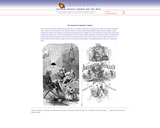
The rise of a new Northern middle class brought with it new ideals of family life and gender roles. While men worked outside the home, women were to preside over the domestic sphere, not only by performing household labor but also by setting a moral example for children and creating a haven that was protected from the outside world. This frontispiece and title page came from a popular 1869 guide to the formation and Maintenance of Economical

Prior to the introduction of "domestic science" in the late-19th century, housework --especially cooking--depended on skills passed down from mother to daughter or possessed by hired domestic labor. The domestic science (or as it later became more commonly called "home economics") movement wanted to standardize routines and recipes, thereby relieving housewives of the anxieties of inexact cooking and bringing the supposed benefits of efficiency into the home. The influence of domestic scientists on cooking can be seen dramatically by comparing an apple pie recipe from Catherine Beecher's Domestic Receipt Book (1846) with one from Fannie Merritt Farmer's Boston Cooking-School Cook Book (1905 ed.). Beecher, daughter of a prominent New England family, wrote on domestic topics (as well as on social issues, such as abolitionism, with her sister Harriet Beecher Stowe). Farmer was a leader in the movement for scientific cooking, and her Boston Cooking-School Cook Book helped to entrench the notion of exact measures and procedures designed to produce a uniform product.

Since at least the 1830s, New York working women endured low pay, long hours, and difficult working conditions. Concerned observers noted that some were even forced to turn to prostitution to supplement their meager incomes. During the Civil War, poor men flocked to the army (wealthier men could purchase substitutes for $300). The women left behind were now responsible for supporting families on their own. While wartime production created additional opportunities for women to work, it also led to even greater exploitation as factory owners pushed their workers to turn out more goods. Under these conditions, some women, such as this one, suggested that collective action might provide a solution.
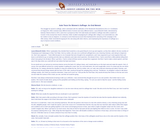
The struggle for women's suffrage, which culminated with the ratification of the Nineteenth Amendment to the U.S. Constitution on August 26, 1920, involved many different kinds of women and many different tactics. Laura Ellsworth Seiler, interviewed by historian Sherna Gluck in 1973, came from a prosperous New York state family and started a suffrage club while a student at Cornell. In this excerpt from Gluck's interview, Seiler recalled campaigning for suffrage after college on an automobile tour, with her mother in tow as chaperon. In contrast to some historical accounts that emphasized the narrowing of the campaign in the 20th century, Seiler remembered arguing for the vote along with other reforms, and emphasizing the importance of suffrage as a way to improve social conditions.

The commitment of the Knights of Labor to equality for women was more than rhetorical, as seen in the career of Elizabeth Rodgers, the Master Workman, or head, of the organization's giant Chicago District No. 24. This 1889 portrait of Rodgers, offered by leading national anti-liquor activist Frances Willard, underscored the desire on the part of many Knights, both men and women, to connect the struggle for labor reform with a broader vision that included vehement opposition to liquor. It also showed the complex ways in which the Knights managed to simultaneously advocate equal rights for women at the same time they upheld the Victorian ideal of domesticity for women. Thus, although Rodgers presided over a Local Assembly with 50,000 male and female members, she was still listed as a "housewife" when she attended the 1886 Richmond convention.
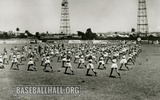
You may recall the All-American Girls Professional Baseball League (AAGPBL) from the 1992 film, A League of Their Own starring Geena Davis and Tom Hanks. Who will ever forget that “there’s no crying in baseball!” But did you know the AAGPBL has deep roots in the upper Midwest, including Wisconsin? This online exhibit pairs research and primary sources, documenting the AAGPBL in Wisconsin.
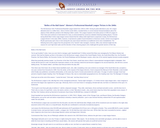
The All-American Girls' Professional Baseball League lasted from 1943 to 1954. During its peak attendance year, the League attracted close to a million fans--three of whom wrote letters, included below, to correct factual misrepresentations about the objects of their affection printed in the following Collier's article. The League inspired a hit motion picture of 1992 (A League of Their Own) and continues to hold interest for many, as demonstrated by numerous websites featuring leading players. Formed during World War II when major league owners feared that the military draft might lead to suspension of play, the All-American League thrived. In the early 1950s, however, it reproduced a pattern found elsewhere in American society: women encouraged to fill jobs (previously open only to men) during the war years faced restrictions as traditional norms were reestablished. The following look at the League from the perspective of its "harried" male managers, however, offers only minimal insight into the reasons for such high ticket sales and the devotion of fans cheering players who challenged the gender barriers of their day.

In this autobiographical account of the life that awaited new nursing recruits in 1893, former nurse Mary Roberts Rinehart painted a vivid portrait of the daily obstacles that stood between nurses and the professional status they hoped to attain. Rinehart described the "simple, plain hell" faced by the young nurse, a description that challenged conventional expectations about professional work.

The Picturing Women Inventors poster series starts and ends with big ideas and questions. Each set of inventors answers the question asked at the top of the poster. Using an inquiry-based approach, we invite you to first explore the stories of women inventors who are often overlooked or forgotten altogether. While doing so, connect the inventors’ experiences to your own lives. Next, develop your own research question and undertake an investigation of the past to uncover the story of a woman inventor. Throughout this process, continue to think outwardly about the ways your classroom experiences could and should impact your community and the world around you.The Picturing Women Inventors poster exhibition and this accompanying Educators’ Guide engage students by revealing these hidden inventors’ stories and, in the process, help redefine who gets to be an inventor. This activity guide contains aligned standards and objectives, learning strategies, supplementary primary and secondary materials, and inquiry-based learning methods that help students see themselves reflected in the stories of inventors past and present through discussion and a research project.